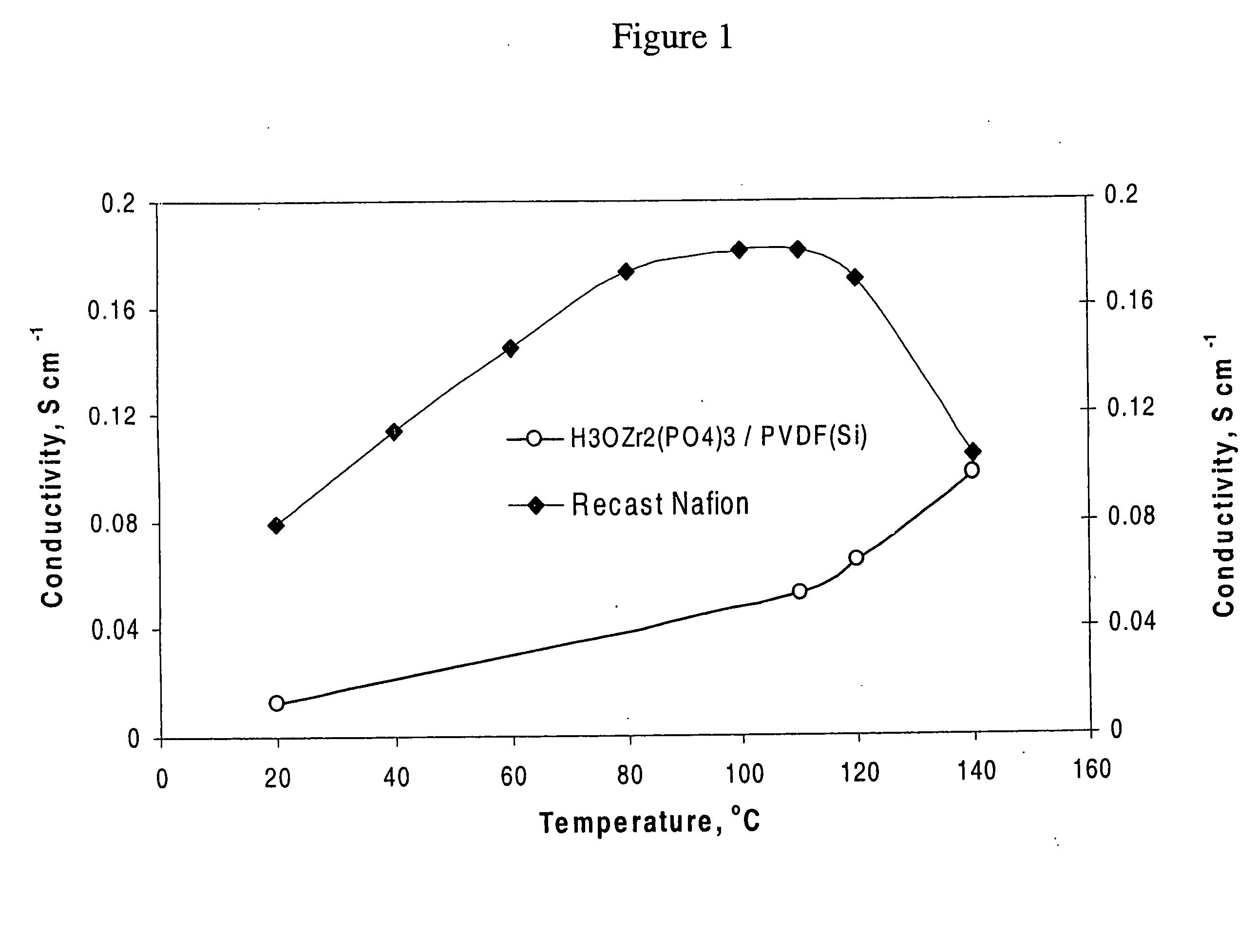High temperature and low relative humidity polymer/inorganic composite membranes for proton exchange membrane fuel cells
a proton exchange membrane and composite membrane technology, applied in the field of organic polymer/inorganic composite materials, can solve the problems of current pem technology, fossil fuels invoke environmental impact and health concerns, and demand for these resources will exceed supply
- Summary
- Abstract
- Description
- Claims
- Application Information
AI Technical Summary
Benefits of technology
Problems solved by technology
Method used
Image
Examples
example 1
[0088] In a particular example an inorganic / organic membrane material includes 60 percent by weight of three-dimensional H3OZr2(PO4)3 and 40 percent functionalized poly(vinylidene fluoride).
[0089] A membrane including 60 percent by weight of three-dimensional H3OZr2(PO4)3 and 40 percent functionalized poly(vinylidene fluoride) is produced in this example by dissolving the polymer in a solvent, adding the three-dimensional H3OZr2(PO4)3 and mixing the polymer and inorganic component. A mixture is cast and the solvent evaporated to form an ion conducting composite membrane.
[0090] Conductivity data for this composite membrane with Si-terminal groups and Si—OH functional groups are measured at elevated temperatures as shown in Table 1.
TABLE 1New composite material:Recastinorganic / organic membrane materialNafion ®:(60% 3-dimensional H3OZr2(PO4)3 + 40%ProtonTemperature,functionalized poly[vinylidene fluoride])conductivity° C.Proton conductivity (S cm−1)(S cm−1)1200.070.171400.10.1
[0091...
PUM
| Property | Measurement | Unit |
|---|---|---|
| temperatures | aaaaa | aaaaa |
| particle sizes | aaaaa | aaaaa |
| temperature | aaaaa | aaaaa |
Abstract
Description
Claims
Application Information
 Login to View More
Login to View More - R&D
- Intellectual Property
- Life Sciences
- Materials
- Tech Scout
- Unparalleled Data Quality
- Higher Quality Content
- 60% Fewer Hallucinations
Browse by: Latest US Patents, China's latest patents, Technical Efficacy Thesaurus, Application Domain, Technology Topic, Popular Technical Reports.
© 2025 PatSnap. All rights reserved.Legal|Privacy policy|Modern Slavery Act Transparency Statement|Sitemap|About US| Contact US: help@patsnap.com



